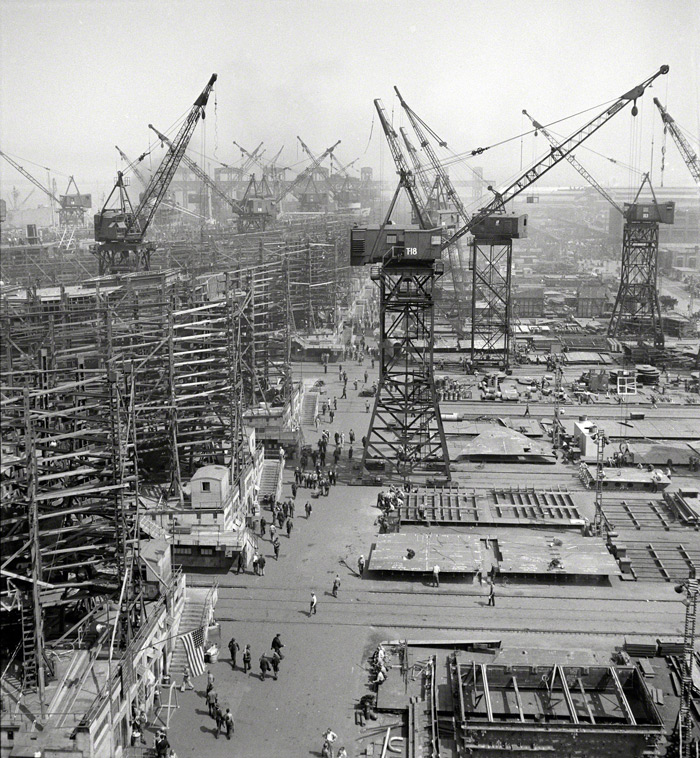Ugly Ducklings
Nov 1, 2013
 Between 1941 and 1945, more ships were built here at Baltimore's Bethlehem-Fairfield yard than anywhere else on earth. Early in the war, building a Liberty Ship–a clunky freighter using a simple design left over from World War I–took eight months; by 1944, after they'd knocked out a few hundred Liberty Ships and gotten a knack for the work, Baltimoreans could build one in 19 days.
Between 1941 and 1945, more ships were built here at Baltimore's Bethlehem-Fairfield yard than anywhere else on earth. Early in the war, building a Liberty Ship–a clunky freighter using a simple design left over from World War I–took eight months; by 1944, after they'd knocked out a few hundred Liberty Ships and gotten a knack for the work, Baltimoreans could build one in 19 days.
Liberty Ships were slow, awkward cargo vessels intended to last only five years–just long enough, it was hoped, for them to supply our forces overseas with everything needed to win the war: jeeps, tanks, food, ammunition, mail from home, medical supplies. More than 2700 were eventually constructed, all from standardized designs and prefabricated components, at shipyards around the country; 350 were built here in Baltimore, more than in any other single yard.
They weren't pretty–the newspapers called them "Ugly Ducklings"–but they could float.
Next door to the Bethlehem-Fairfield works was another shipyard, Maryland Drydock, where round the clock war work was also under way. At Maryland Drydock, old freighters and passenger liners were refitted to carry troops to war. Racks of bunks were installed in former cargo holds and staterooms, stacked eight deep, with just 18 vertical inches between them. Thousands of soldiers would be crammed into each ship.
Meanwhile, thousands of workmen, including my father, were making fabulous wages of a whole dollar an hour at Maryland Drydock. My father worked as a sheet metal helper there until he got drafted into the army in 1943. His job was to install ductwork in hopes of providing ventilation deep into the holds of cargo ships, where once piles of sugar or bolts of cloth or cases of rum had traveled in relatively airless comfort. The idea was that soldiers on their way to war might want to be able to breathe while jammed together into the new bunks.
By the summer of 1944, my father couldn't have been very surprised when he became a passenger on a troop ship just like the ones he'd worked on at Maryland Drydock. Fifty years later, he wrote about his experience aboard the USS West Point:
As we boarded the ship, each of us was given a paper tag–mine was pink–and that meant I got into the chow line at 2 p.m. and 10 p.m. The cooks started serving Spam and beans as we pulled out of Boston harbor, and they didn't stop, around the clock, until our ship tied up at Liverpool four and a half days later.
On the ship, which was carrying more than 11,000 soldiers and a 1500-man crew, my company was assigned to bunks in the lowest hold. I was given a wooden club, and in the event of an emergency I was supposed to stand at the head of a specified gangway and maintain order.
We all ignored those assignments and simply slept on deck. We didn't want to be below the waterline when the torpedo struck. We lucked out.